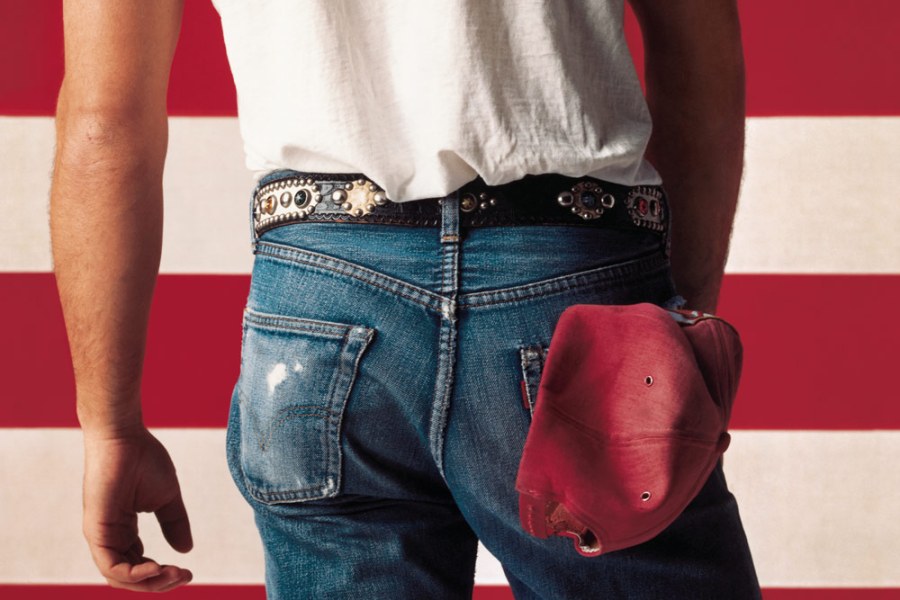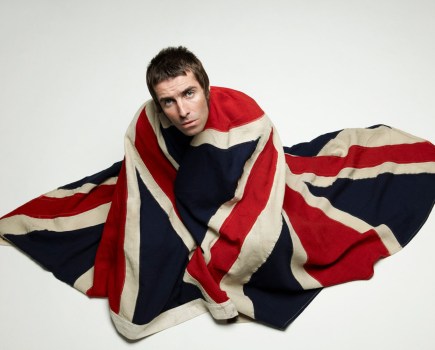In 1984 Bruce Springsteen’s vibrant musical masterpiece – the album Born in the U.S.A. – helped to reinforce his status as an American hero. It boasted a seemingly hugely patriotic title track and a front cover with what many mistakenly interpreted as an exercise in flag-waving patriotism, but the truth was far from what it may have appeared…
It was the seventh studio album from Springsteen, but rather than tub-thumping about being an American, the US musician had decided he had to protest at what the then US government was doing. Over 70 songs came out of the sessions for the album and, despite its colourful cover image and uplifting music, the lyrics of the album dealt with somewhat darker issues such as working-class struggles, patriotism, personal relationships and disillusionment.
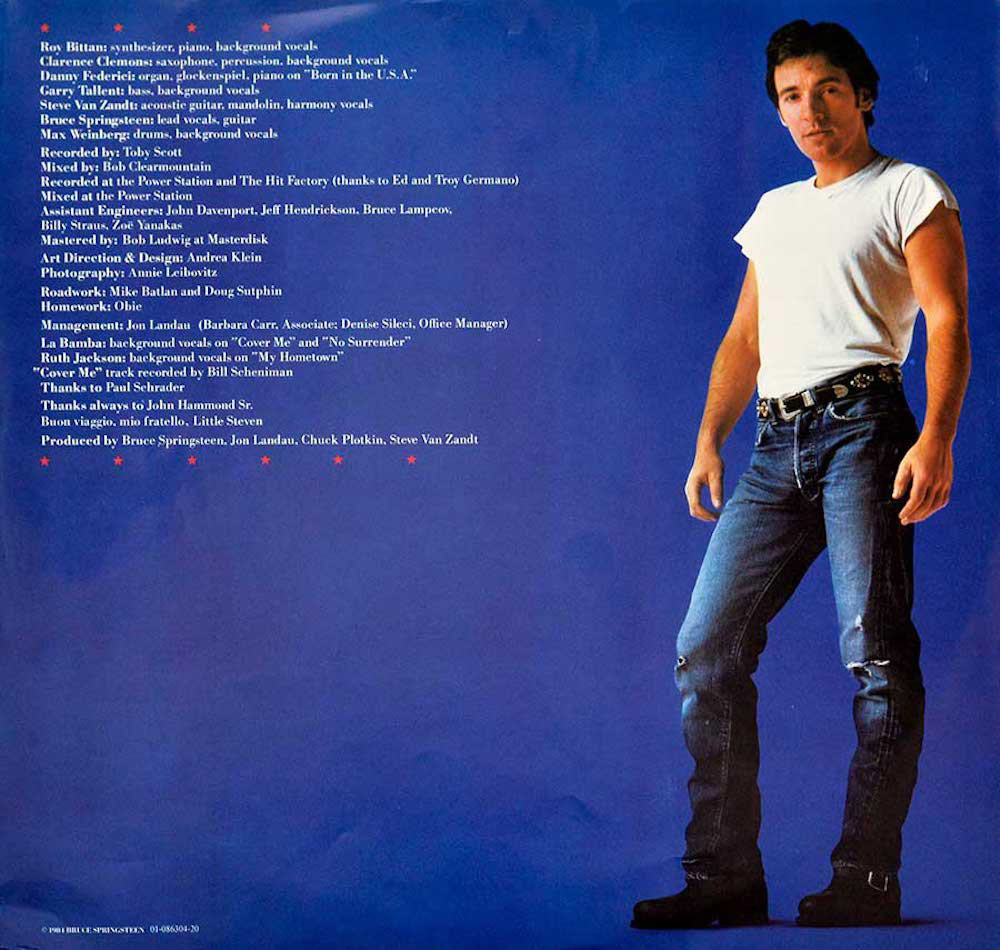
Mistaken patriotism
Many listeners had mistakenly taken the chorus of Born in the U.S.A. to be a celebration of being American – misinterpreting the song as almost a musical love letter to the US – whilst missing the point that the track was a critical viewpoint of the then US governmental regime, headed up by President Ronald Reagan. Reagan had also totally missed the point and incorrectly thought the song was a ‘message of hope.’ The album came out in 1984, a US presidential election year, and Reagan’s campaign people had gone so far as to invite Springsteen to appear with him at a campaign stop in New Jersey – unsurprisingly, Springsteen declined.
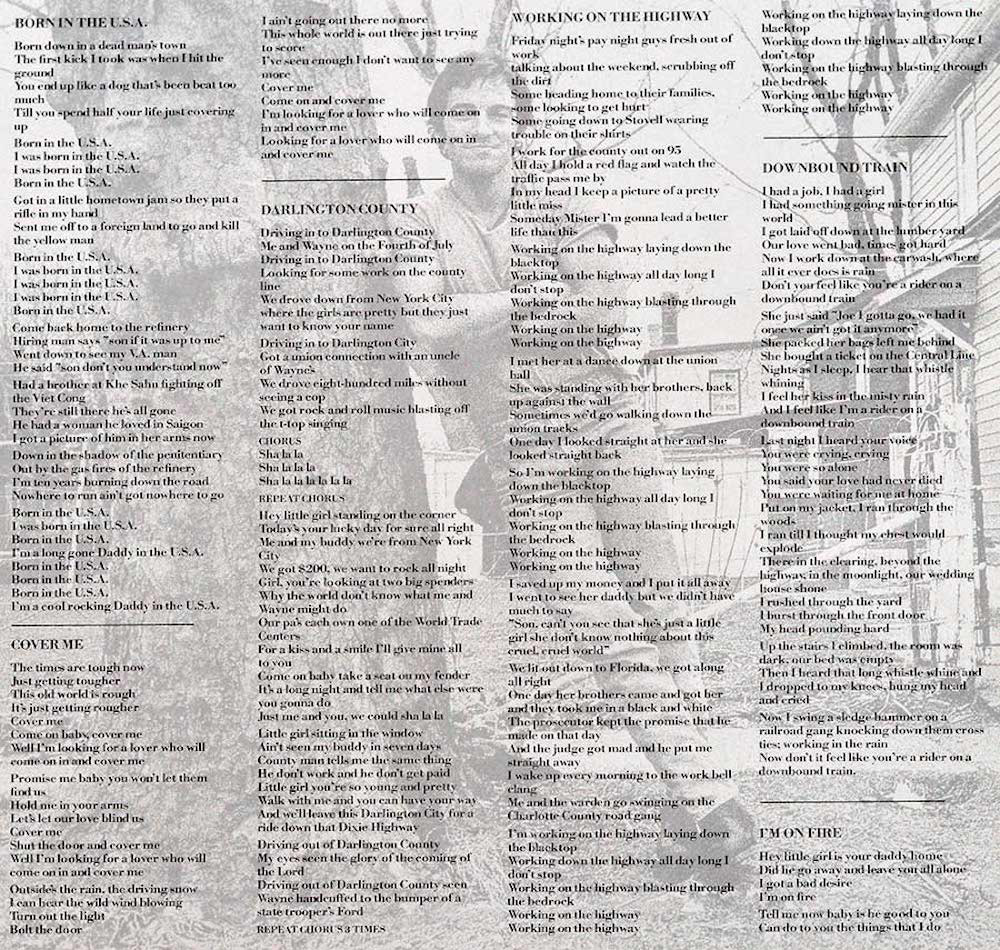
Vietnam
Springsteen had actually written Born in the U.S.A. from a place of discontent. He was upset about the issues that the US’s Vietnam veterans encountered when they returned home after serving their country. Lyrics like ‘Got in a little hometown jam, So they put a rifle in my hand, Sent me off to a foreign land, To go and kill the yellow man’ clearly indicate a degree of realism and cynicism at the US soldiers sent to fight in the Vietnam War.
Springsteen was adamant that all US veterans deserved a hero’s welcome for putting their lives on the line for the country, but the reality was very different. Vietnam was the first war from which the US didn’t emerge victorious and there was a feeling that those in power were trying to sweep it, and US veterans, under the carpet.
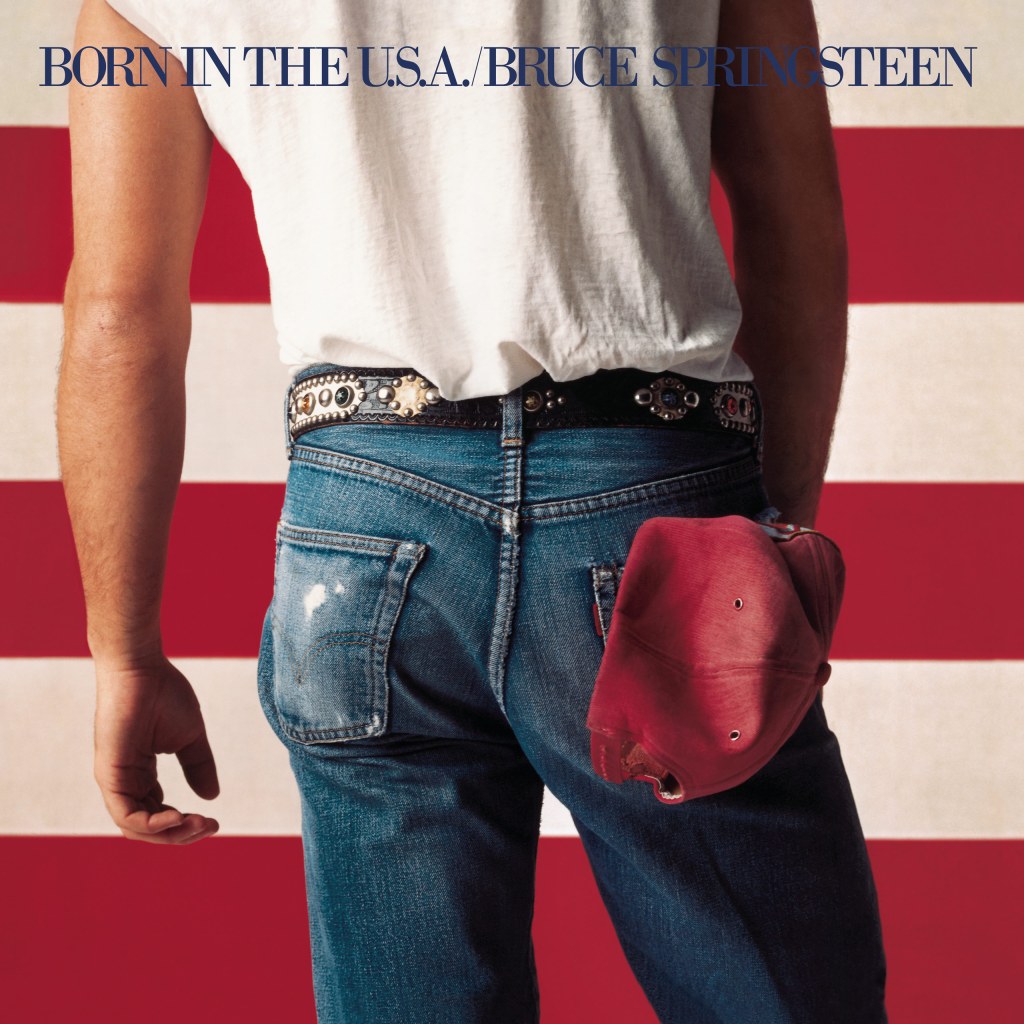
Flag backdrop
The album cover used this feeling of discontent to create a landmark shot. Shot by Annie Leibovitz, the image sees Springsteen pictured wearing red, white and blue, in front of a graphic backdrop of the stripes of the US flag. You’d be hard-pressed to come up with an image that shouted ‘U.S.A.’ harder than this album cover. The red baseball cap hanging out of the back pocket of his blue jeans also helped to deliver the message that Springsteen was just like your average blue-collar working guy from New Jersey (Springsteen’s birth state).
Born in the U.S.A. embraced a livelier, more mainstream sound than on previous Springsteen albums. Springsteen’s previous studio LP, 1982’s Nebraska, had a stark quality, but he maintained that the first half of Born in the U.S.A. was similar, being ‘written very much like Nebraska – the characters and the stories, the style of writing – except it’s just in the rock-band setting.’
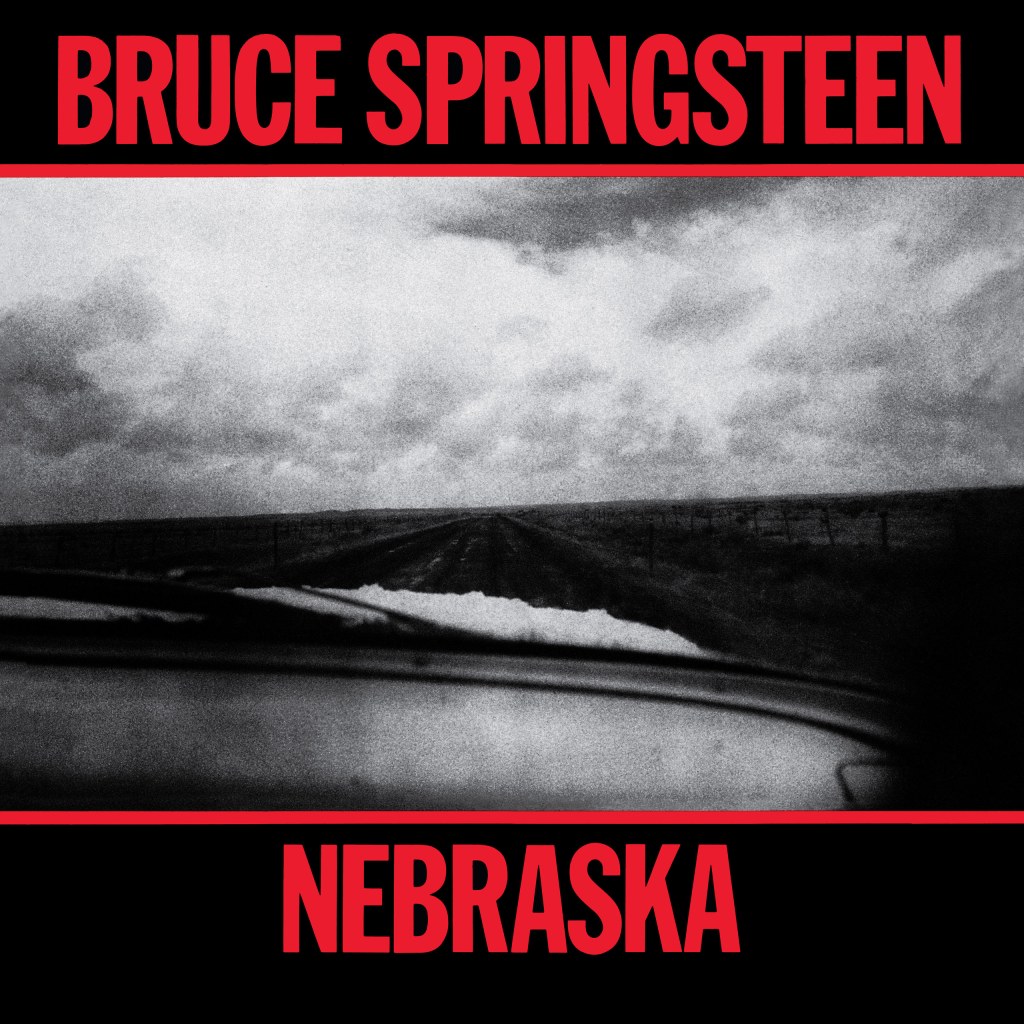
Columbia Records’ art director Andrea Klein had designed the stark, black-and-white cover for the 1982 Nebraska album, which used a 1975 landscape photograph shot through the window of an old pick-up truck by David Michael Kennedy (who also shot album covers for Billy Idol, Muddy Waters, Willie Nelson and many others). But, after hearing the more rousing music of Born in the U.S.A., Klein recommended that the album have a more bold and colourful cover than Nebraska. Initially, Springsteen had suggested working from US photographer Joseph Szabo’s 1978 book Almost Grown (which featured images of US teenagers), but Klein suggested that they shoot some studio shots and the idea of using a US flag in some way was quickly adopted.
Springsteen’s manager Jon Landau put forth the suggestion of using a flag image by US artist Jasper Johns and Andrea Klein actually had an artist paint a Jasper Johns-like flag. Later on, the graffiti artist Keith Haring also painted a flag, which was used for some shots. In the end a huge, 25-feet wide, US flag was tacked to the studio wall and it provided the striking backdrop for the album images. Andrea Klein art directed and designed the album packaging and five of the album’s accompanying seven single releases.
Iconic image
Klein brought Annie Leibovitz in for the shoot due to Leibovitz’s reputation for producing imaginative portraits of musicians and actors for Rolling Stone magazine. Indeed, Leibovitz’s haunting portrait of a naked John Lennon cuddling and kissing a fully clothed Yoko Ono, photographed just hours before the former Beatle was shot to death by Mark Chapman on a New York street, was evidence alone of her innate ability to capture the essence of famous musicians.
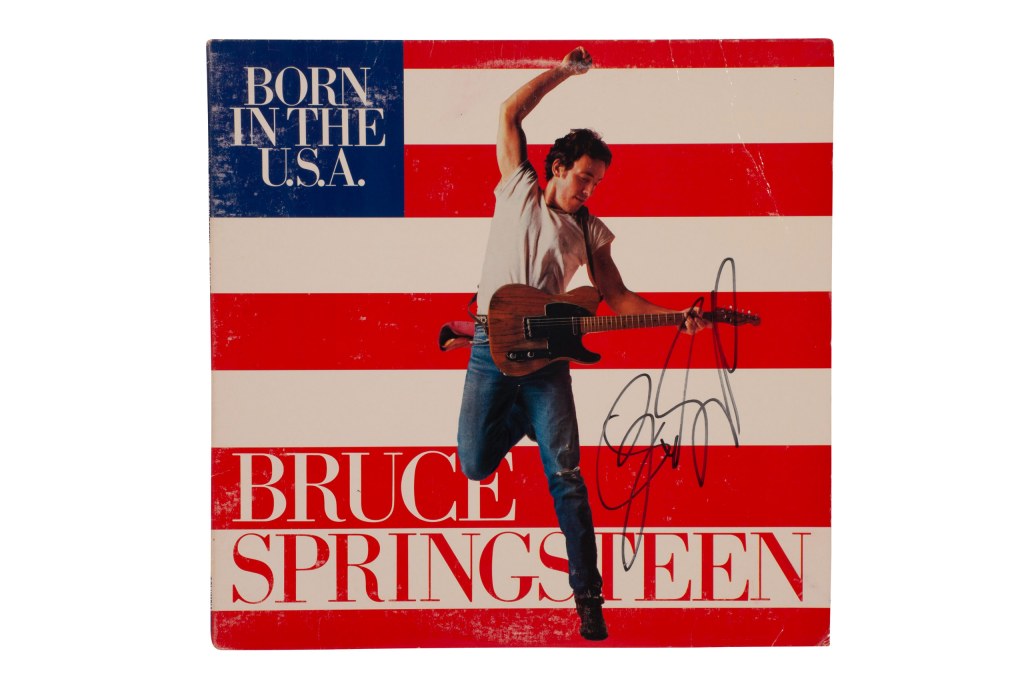
It was Andrea Klein who directed the shoot and hundreds of images were shot of Springsteen by Leibovitz. These included pictures of Springsteen with fire behind him and of the singer jumping in the air (one of which was used for the cover of the single release of the Born in the U.S.A. track). However, it was the rear view shot that was chosen with Klein on record as describing some of the front portraits of Springsteen as ‘he looked schlumpy.’
Andrea Klein said, ‘We all knew the flag was a great, marketable image,’ but she denied its inspiration was tied to the political events of the time, stating, ‘I don’t think being an election year had anything to do with it.’ Klein also carefully selected Bodoni Bold as the cover typeface – a font that was engrained into the visual consciousness of American people due to its frequent use on US postage stamps.
Powerful
Leibovitz’s celebrated photo of Springsteen’s backside against the backdrop of a US flag became a cult image in Western popular culture. In a 1984 interview with journalist Kurt Loder, Springsteen explained, ‘We had the flag on the cover because the first song was called Born in the U.S.A. The theme of the record kind of follows from the themes I’ve been writing about for at least the last six or seven years. But the flag is a powerful image, and when you set that stuff loose, you don’t know what’s gonna be done with it.’
Some of those who had picked up on the title track’s true meaning assumed that Springsteen was relieving himself on the flag on the cover. In a 1984 Rolling Stone magazine interview Springsteen denied this, ‘No, no. That was unintentional. We took a lot of different types of pictures, and in the end, the picture of my ass looked better than the picture of my face, so that’s what went on the cover. I didn’t have any secret message. I don’t do that very much.’
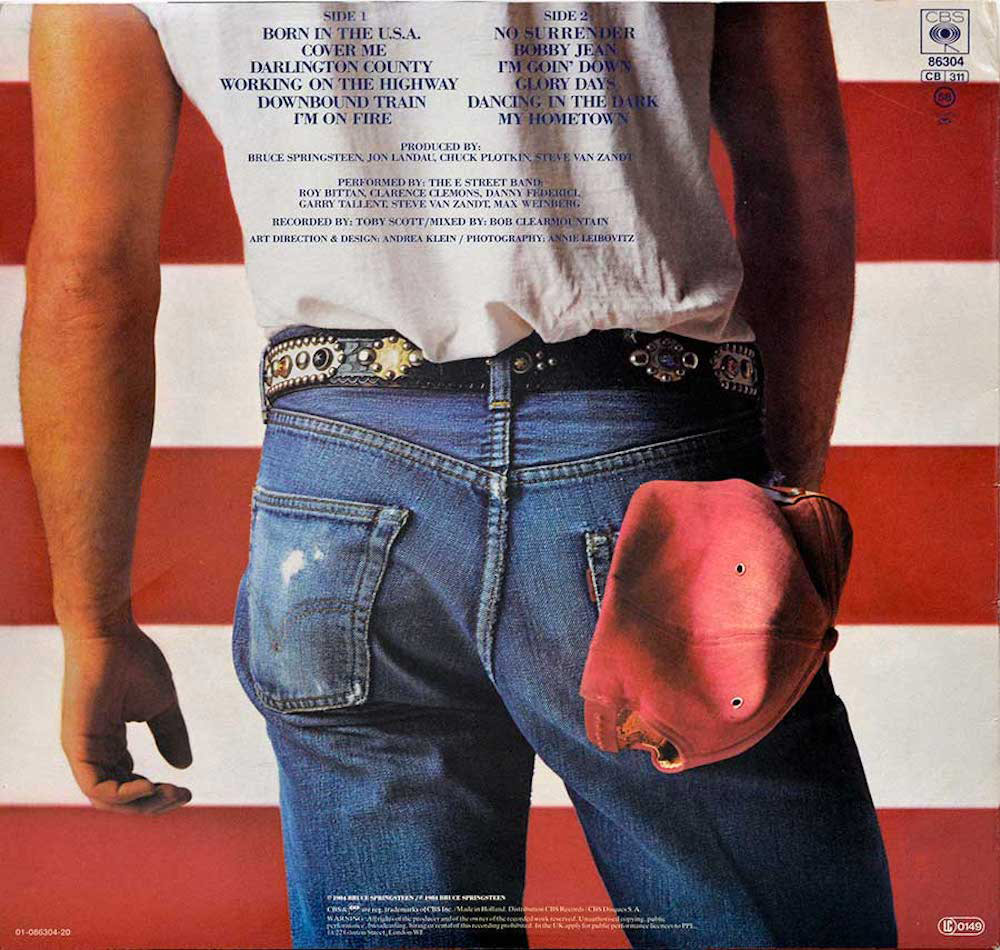
Rear view
Leibovitz’s Born in the U.S.A. cover photography delivered the perfect visual accompaniment to Springsteen’s music. The stark, yet striking, final image had just two main elements: the back view of Springsteen’s body, above his knees and below his shoulders, and part of the US flag. Both images are fragments of the whole, shown close up. Springsteen’s blue jeans provide the blue in the red, white and blue flag imagery. Even without seeing his face, the pose is cool and is packed with attitude and confidence. Leibovitz was later commissioned to shoot the cover of Springsteen’s next studio LP, 1987’s Tunnel of Love.
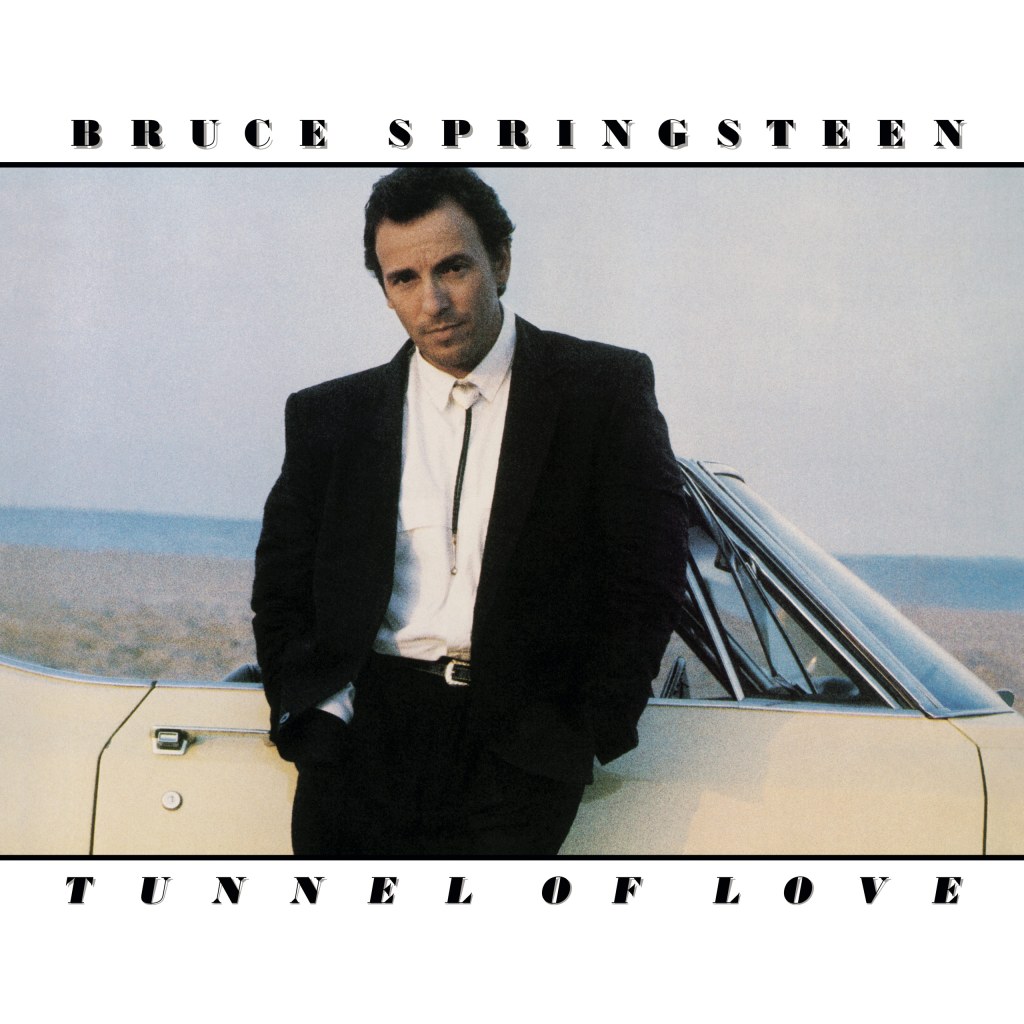
There’s also an amazing back story about the red baseball cap stuffed into one of Springsteen’s rear jeans pockets on the album cover. The cap had belonged to the father of Bruce’s friend from New Jersey, Lance Larson. When Larson’s father died, he handed Springsteen his dad’s favourite red baseball cap. It was included on the album cover in tribute after Springsteen told his friend that his father would live on in music history through the album.
Now, over 40 years after Born in the U.S.A.’s original release, the septuagenarian Springsteen (born in the USA in 1949) is still touring and performing some of the songs from his classic album. But, the timeless imagery of Leibovitz’s cover photography lives on just as strongly as the album’s music – something that wouldn’t have been possible had they chosen to use Springsteen’s face, rather than his backside, on the LP’s cover.
FACT FILE:
Bruce Springsteen’s Born in the U.S.A.
- Musicians: Bruce Springsteen, Roy Bittan, Clarence Clemons, Danny Federici, Garry Tallent, Steven Van Zandt, Max Weinberg, Richie ‘La Bamba’ Rosenberg (vocals) and Ruth Davis (vocals).
- Released: 4 June 1984 (Columbia).
- Best chart performance: No. 1 in the album charts in Australia, Austria, Canada, Germany, The Netherlands, New Zealand, Norway, Sweden, Switzerland, the UK and the US.
- Sales: Over 30,000,000 certified sales worldwide.
- Fascinating fact: Although the Born in the U.S.A. album is strong musically – it has 12 tracks honed down from over 80 written – Springsteen’s manager Jon Landau believed it lacked a ‘killer single’. A fed-up Springsteen had believed the album was finished but, in the end, he took Landau’s comments onboard and wrote the track Dancing In The Dark overnight. The song went on to be Springsteen’s highest-charting single of his career in the US, reaching number 2 in the Billboard Hot 100. His highest charting UK hit was 1994’s Streets of Philadelphia.
Annie Leibovitz

Anna-Lou ‘Annie’ Leibovitz (born 1949) is a US photographer known for her iconic portrait images of celebrities and musicians. She began her photography career in 1970 as a staff photographer for Rolling Stone magazine, becoming the magazine’s chief photographer in 1973. She left Rolling Stone in 1983 and her most famous images include her Polaroid shot of John Lennon and Yoko Ono, taken earlier in the day that Lennon was shot dead, and a nude shot of a pregnant Demi Moore. Leibovitz shot the 2016 Pirelli calendar and the Library of Congress has declared her a ‘Living Legend’ for her creative contributions to American life.
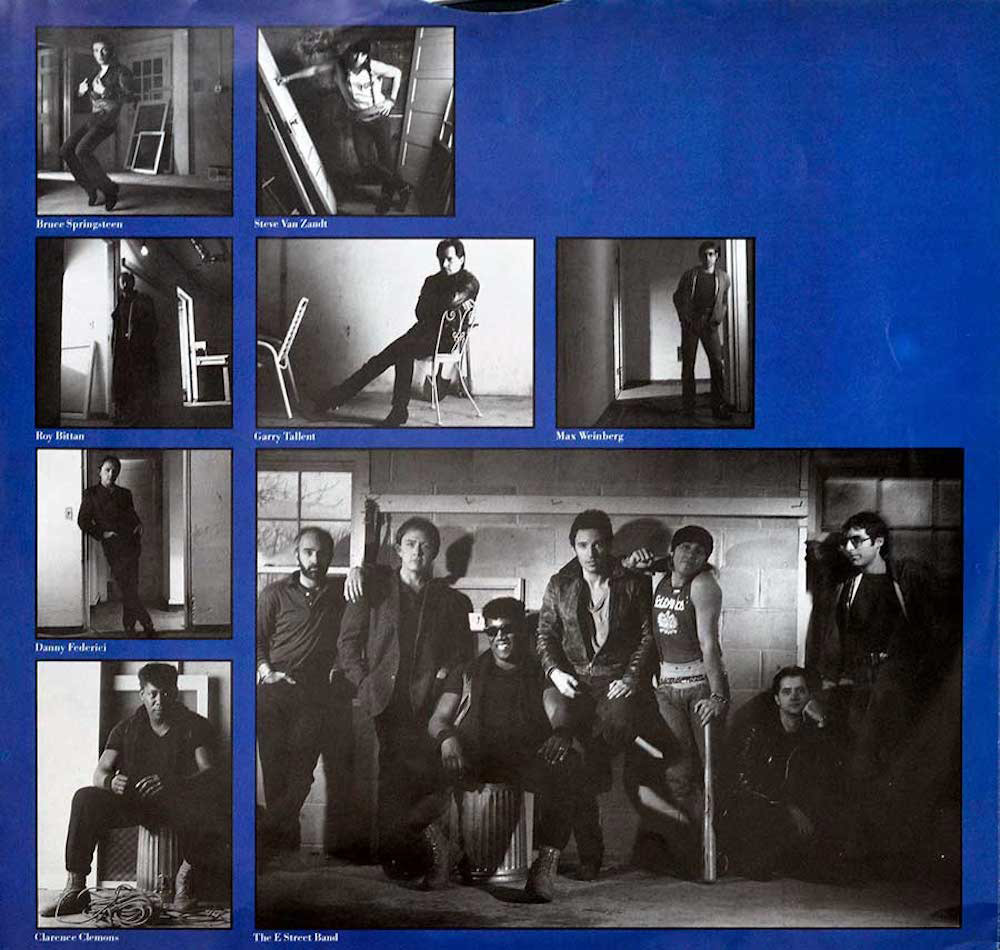
THE PANEL ON BORN IN THE U.S.A.
ANDY COWLES: ‘Annie Leibovitz learned her craft taking advantage of all the access the ‘70s had to offer. Now the world’s greatest living image creator, she has the ability to crystallise the world’s biggest stars into single, unforgettable moments. This cover might feel stage-managed, but it tells the whole American story in two seconds flat. Genius.’
KIRK WEDDLE: ‘This is a great album cover photo. It screams USA in an international visual language. All red, white and blue. A very simple photo; perfectly styled. I like that Springsteen’s face isn’t shown, it makes the photo more iconic, graphic and not [a] portrait.’
RACHAEL WRIGHT: ‘The mythology of America perfectly captured in one square. But, like the album itself, it’s so much more nuanced than just unabashed patriotism. We’re used to seeing female celebrities reduced to their body parts by male photographers, so it’s nice to see that turned on its head, and done with intelligence. My favourite part is the crumpled, unevenly tucked T-shirt, free from the over-perfection of a 21st century re-toucher’s stylus.’

